Whether a roadster or fatbike, folding bike or Pedelec – the cycling season kicks off for many people as soon as the spring arrives. The climate change, traffic jams and improving one’s own fitness are good arguments for the emission-free means of muscle-powered transport. And marketing departments that want to stay in the fast lane, should waste no time in occupying themselves in detail with the bicycle theme too.
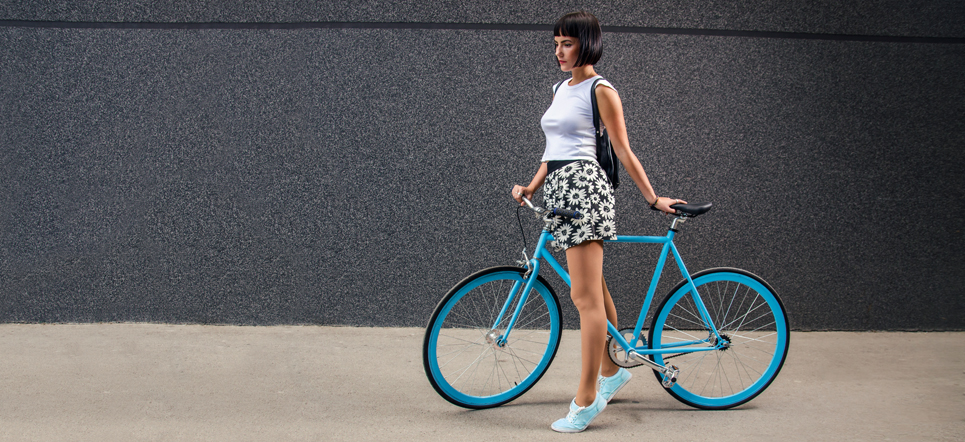
In spite of all the recommendations by the traffic experts and even more stringent emission limits, cars continue to get wider, bigger and more powerful. The symbol for the engine-powered climate killer: the SUV. Mothers drive their children to the kindergarten in the metal constructions that were originally built for off-road transport, grandpa takes a relaxed drive to the shops because it is easier to climb into the higher vehicles and they accommodate the whole family comfortably on the way to their holiday destination. The new limits for the CO2 emissions for cars presented by the EU Climate Commissioner, Miguel Arias Cañete, at the end of 2017 don’t seem to have deterred many people. By the year 2030, new vehicles are to emit 30% less carbon dioxide into the environment. Driving around in off-road vehicles certainly won’t help achieve this target. Luckily, the countermovement to the over-dimensional mini tanks is already on the road, namely on two wheels: the bicycle.
The Copenhagenisation is picking up speed
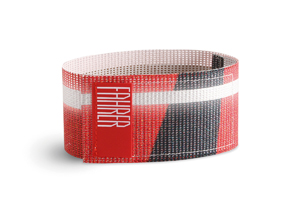
The Berlin-based think tank Fahrer designed bicycle clips made out of used advertising banners and truck canvas for sustainably-minded cyclists.
Ultimately, there are many reasons for swapping vehicles: The bicycle – invented in 1817 by Karl Drais – is one of the most eco-friendly means of transport, for short routes one often reaches one’s destination faster compared to other modes of transport, completely without the use of fuel, comprehensive insurance, tax payments or an MOT. Furthermore, people who cycle daily keep fit, improve their circulation and immune system – as long as one doesn’t get stuck behind a fuming exhaust at every set of traffic lights. This is where the politicians and urban planners come into play. In the Copenhagenize Index of 2017, a ranking of the top 20 bicycle cities that is published by the Copenhagenize Design Company every two years, Copenhagen currently lies in first place, ahead of Utrecht and Amsterdam. In the Danish capital, the cycling paths are up to two and a half metres wide and are separated off from the motorised traffic, running between grass verges and pavements. Every day up to 50,000 pedal-pushers are rushing around in the Nørrebrogade district, which is partly closed for cars and cycle highways lead to the city centre from the surrounding municipalities. Footrests with handles at particular stopping points and slanted rubbish bins that make it easier to aim while sitting on a bike, round off the amenities. “The world is ready for the bicycle. It is the most efficient tool to repair our broken cities,” assessed Mikael Colville-Andersen, CEO of the Copenhagenize Design Company at the Bicycle Logistics Conference in Vienna in 2017 during an interview with the local radio station, W24. Bikes allegedly promote the development towards more people-friendly cities, because they extend the possibilities of CO2-neutral mobility. Hamburg would also like to push the Copenhagenisation. In the city where the first bicycle club in the world was founded in 1869, namely the Eimsbüttler Velozipeden Reitclub, numerous marketing measures executed by the agency Jung von Matt/Sports are designed to push bicycle traffic too from the spring of 2019 onwards. The Hanseatic city is spending no less than 3.92 mil. Euros on the campaign. An additional 300,000 Euros are to be invested in advertising measures to improve bicycle traffic safety.
City biking
The European city network, Climate Alliance, launched a nationwide campaign: Since 2008 the project City Cycling has been encouraging politicians and citizens to jump onto their bikes in their home towns. The participating municipalities choose a period of 21 consecutive days between May and September, when the campaign runs locally. At the end of the campaign period the kilometres cycled are counted and the best municipalities are distinguished in five categories. All of the winning municipalities receive a waterproof bicycle bag in the City Cycling design. Further high-quality prizes to do with the theme bicycles are to be additionally raffled off, including electric bikes of the Stevens Bikes brand that are equipped with a Bosch e-bike drive unit, bike mounts, locks, helmets, lights and branded T-shirts. The participating municipalities hand out customised caps, sports bottles, reflector stickers, saddle covers and tyre repair sets to the cyclists and potential participants at events and promotion campaigns for the city cycling project. “In the light of the increasing traffic load in cities and the related negative impact on people and the environment, the aim of city cycling is to make a contribution towards climate protection and set a sign for the increased promotion of using bikes as a means of transport within the municipalities – and ultimately to promote the fun of riding bikes,” the Project Director, André Muno, explained. “Local politicians as the local decision-makers on bicycle traffic issues can experience what it is like to travel by bike in their own municipalities and then initiate the respective improvement measures. Merchandising items support the campaign as attention-grabbing multipliers and thus increase the awareness for City Cycling.”
In 2018, almost 300,000 people in Germany, Luxemburg, Switzerland and even Brazil took part in the campaign and together travelled 60 mil. km on two wheels – instead of by car. This reduced the CO2 emissions by 8,400 t.
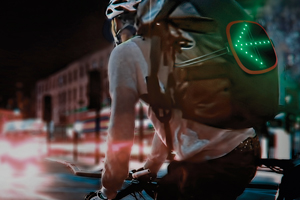
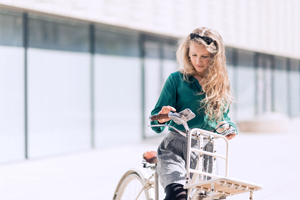
From the everyday vehicle to a status symbol
Cycling is not only becoming more and more popular in the congested big cities. Tour de France enthusiasts and sports fanatics, who mount their expensive racing bikes at the weekend donning professional equipment, boisterous 16-year-olds who race down steep slopes on their mountain bikes, cycling students carrying their shopping home on cargo bikes and open-air fans who cover amazingly long stretches through forests and meadows have joined ranks with the trendconscious hipsters, who wind their way around the traffic on leather saddles and the commuting suit-wearers on folding bikes. Customised bikes are a further trend. Whether purist single-speed bikes or ultralight crossbikes – for every preference there is a manufacturer waiting to customise individual tailor-made bikes for their customers following the modular principle. Anyone, who wants to totally stand out, will be delighted with the seamless and spokeless city bike by Gianluca Sada, which can be folded together to the size of a walking-stick umbrella or alternatively they can opt for an e-bike made by the Berlin-based company aceteam that has a frame made of domestic ash and an engine that can be started per app. However, one certainly has to dig deeper into one’s (saddlebag) pocket for such design wonders.
Sustainable, functional and stylish
Promoting companies can also fuel the velophile passion of their target group with favourablypriced give-aways. For example the social-ecologically oriented Bank GLS drew attention to itself a few years ago with saddle covers that were pulled over the saddles of bikes parked at universities and train stations in the scope of a guerrilla campaign. The distributed rain protection item bore the slogan “What is your money doing? Switch to a sensible bank now.” Fahrer specialises in particularly innovative cycling and lifestyle accessories. Alongside bags, luggage racks, handlebar covers and chain tubes, the Berlin-based company also produces reflective bicycle clips and key pendants that convey sportiness as well as sustainability and social commitment. The accessories made from used advertising banners, truck canvas and other recyclable materials are produced in combination with workshops for the disabled and can also be implemented as promotional gifts. “Cyclists are at times more conscious in the way they treat their environment. Gifts that are made while taking sustainable aspects into account and which don’t have a negative production or transport balance thus suit this target group perfectly,” explained Nico Wünsche, Sales and Marketing Director at Fahrer. “Bike manufacturers or bike shops can for instance recycle their advertising materials from the previous season or used bike inner tubes. Branded with a company logo, the items establish a long-term bond to the brand or distributor.”

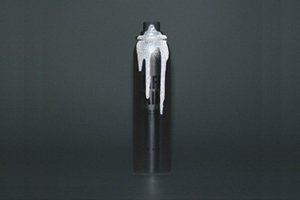
CI-compatibly imprinted bicycle bells that can even impress with individual sounds serve as an audible means of advertising. After all, drawing attention to themselves can be essential for the survival of cyclists. Which is why items revolving around the theme safety are always very popular with the pedal-pushing community. Volvo also worries about the bikers. So that they are visible to other road traffic users in the dark at all times and also sport a stylish look, the car manufacturer sold a spray in bike shops in London that enabled bike fans to apply an almost colourless layer to their bikes or clothing. Invisible in daylight, the sprayed spots reflect the headlights of cars at night. After around a week, the reflective effect wears off. The spray can be simply washed out of from the textiles in the washing machine.
On the topic of sportswear: This completes the huge selection of haptic advertising items in the bicycle segment. Whether functional shirts, thermal jackets or headbands – no route is too long for passionate cycles when kitted out with the right equipment. And wearing the right clothes, even unmotivated cyclists find it a lot easier to swap the car seat for the bicycle saddle. So, hand over those haptic boosters now, so everyone can get pedalling! Because one thing is sure: We urgently have to take the exit heading for the mobility revolution.
// Jasmin Oberdorfer
photos: Bike Citizens Mobile Solutions (1); Fahrer Berlin (1); Intraco Trading (1); iStockphoto (1); Volvo Car UK (2)



